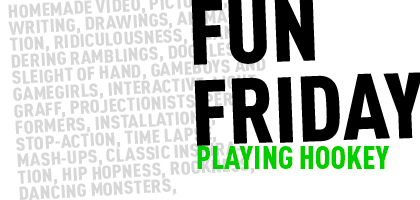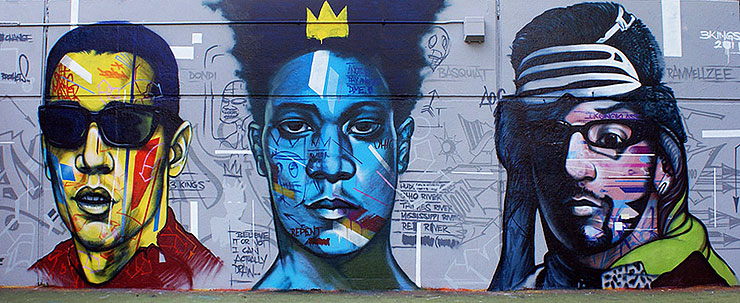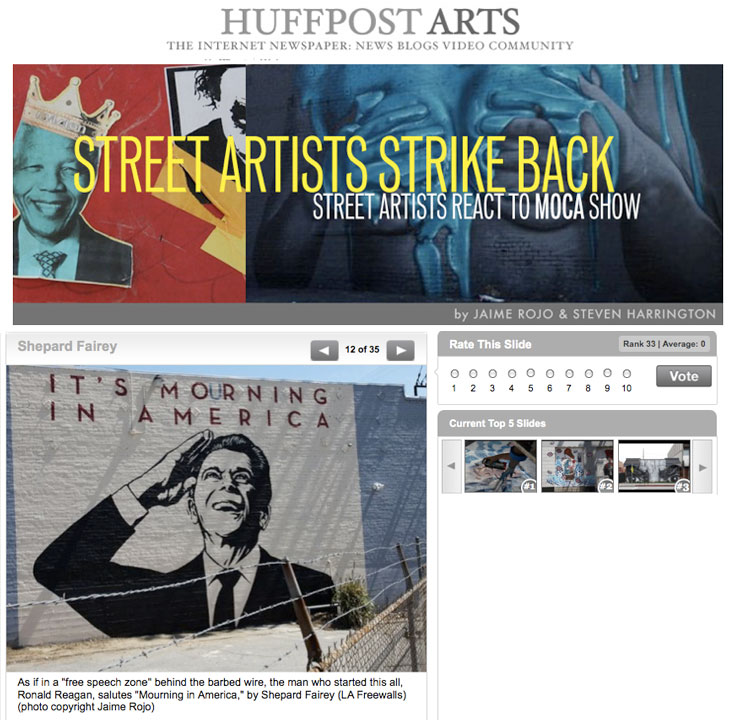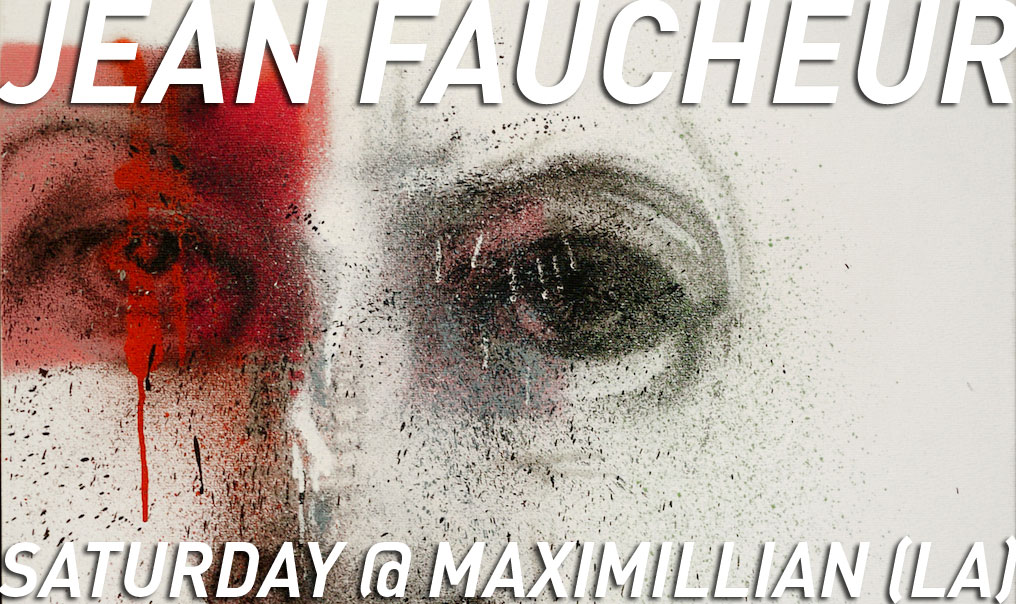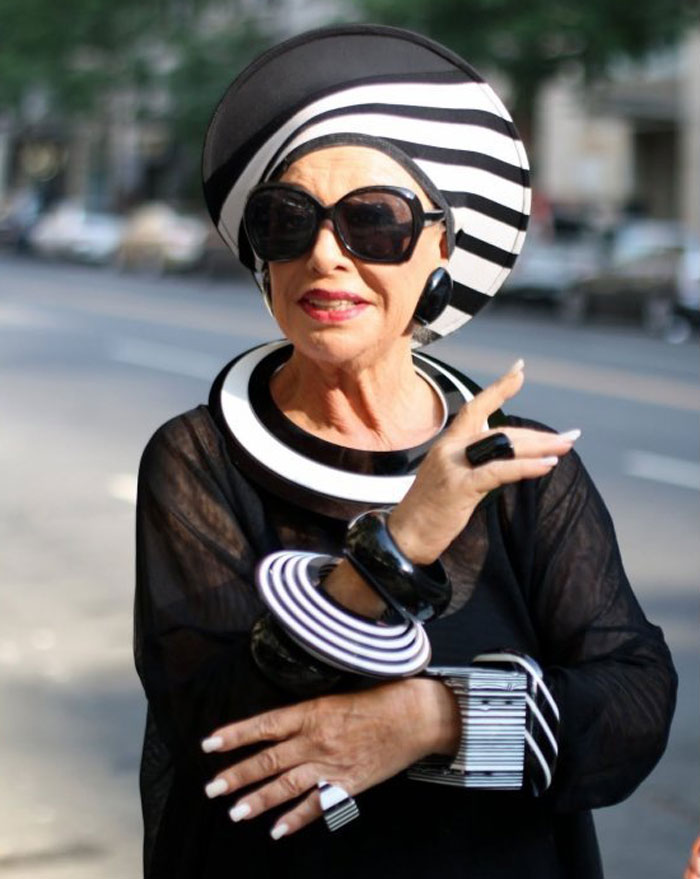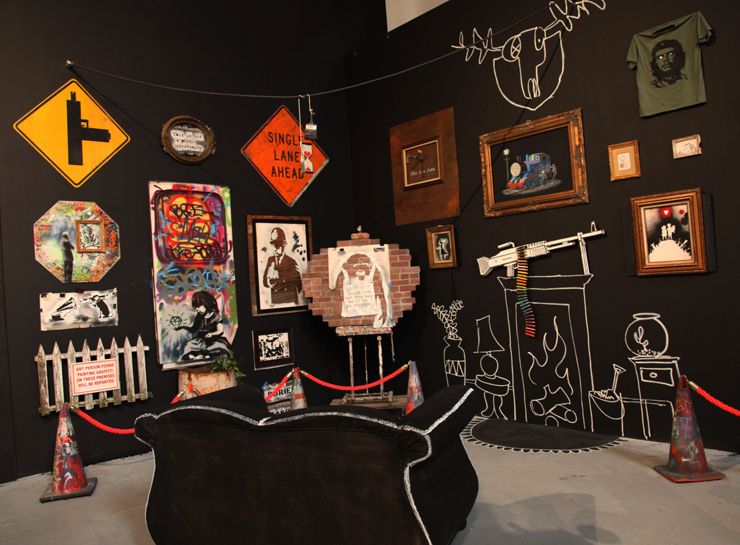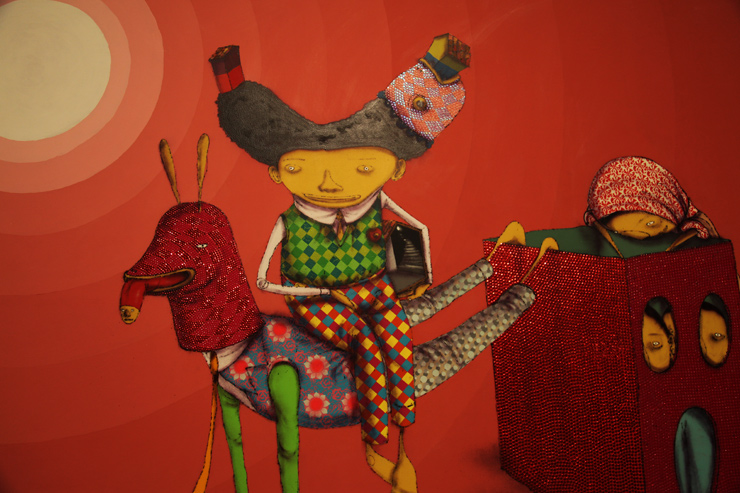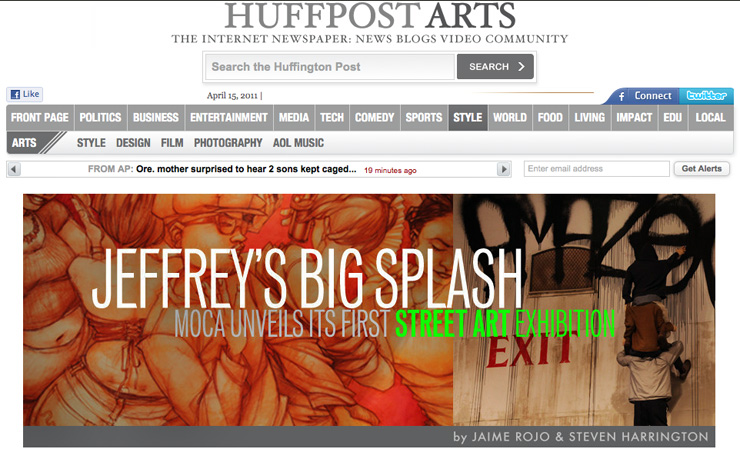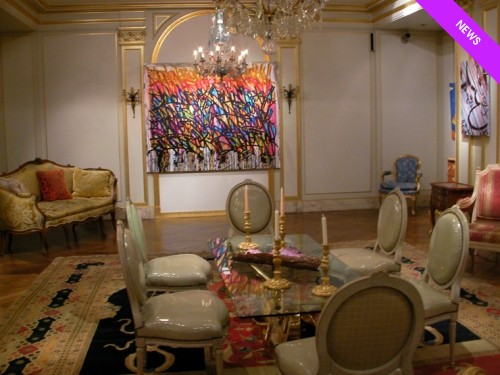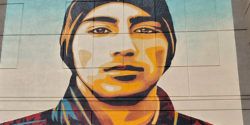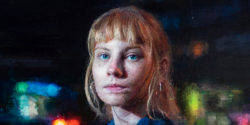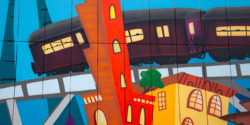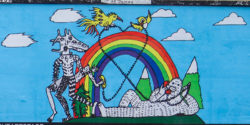
Subculture Capital
RONNIE CUTRONE . RAMMELLZEE .
KOSTAS SEREMETIS . ROSTARR
Gallery Exhibition: OCTOBER 14 – NOVEMBER 15
OPENING RECEPTION: OCTOBER 14 6-9 PM
Popular culture most typically refers to the broad spectrum of general society whose ideas, perspectives, attitudes, images and other phenomena are deemed preferred within the mainstream. However, most often these perceptions originate from subcultures that represent perspectives with which the mainstream popular culture has only limited familiarity. Popular culture changes rapidly and occurs uniquely in place and time and represents a complex number of mutually interdependent values that influence society and its institutions. Subcultures however, differentiate themselves by way of alternative linguistic, aesthetic, religious, political, sexual, and/or geographical dispositions that become the foundation for qualities adopted by the masses, but filtered and then amplified.
“Subcultural Capital” is described as the cultural knowledge and commodities acquired by members of a subculture, raising their status and helping differentiate them from members of other groups. Ronnie Cutrone, Rammellzee, Kostas Seremetis, and Romon Kimin Yang aka Rostarr, signal their membership through the distinctive use of style, spontaneity and popular iconography derived from their subcultural influences – and elevate as masters of their craft. Characterized by themes drawn from popular mass culture, such as advertising, comic books and mundane cultural objects, the exhibition, Subculture Capital integrates subculture and mass culture, pop art and post modernism. Using techniques that include appropriation, collage, painting, sculpture, film, and performance, these four artists individually refine and stylize their cultural influences, manipulating them into embodiments of personal compilations.
ARTISTS:
Ronnie Cutrone is a indefinable artist, best known for his large-scale paintings of America’s favorite cartoon characters, such as Felix the Cat, Pink Panther and Woody Woodpecker. On the surface, Cutrone’s paintings are the essence of pop: colorful, lively, and highly accessible. Cutrone considers himself an appropriation collagist who thinks it a sin to create new images in a world already too saturated with them. He has been exhibited widely from the likes of Tony Shafrazi, Saatchi and Saatchi, and Milk Studios to the Whitney, MoMA, and invited to participate in the Venice Biennale. Cutrone, who was Andy Warhol’s assistant at the “art factory” during Warhol’s most productive and prestigious years, has emerged as a master among disciples.
Rammellzee “The equation “the RAMM:ELL:ZEE” represents our letters history with the statement “GOTHIC FUTURISM,” witch describes two time periods of our letters in their war chassis design for battle against society’s curse word graffiti, where the word “Alphabet” means FIRST BET in this war. The Iconic treatise on the dictionary spelling tactics is used to formulate strategies with other weapons like music notes and computer viruses.” Rammellzee is sometimes called an AfroFuturist, but he will be the first to tell you,” he has no Afro for futurism.” As a pioneer in hip-hop, Rammellzee is responsible for developing specific vocal styles that date back to the 1980s. Discovered by a larger audience through 80’s cult films like Wild Style and Style Wars, his artwork and performances has been exhibited world wide, in galleries and museums including P.S. 1 and the Venice Biennale, and the biggest museum of all: the train yard.
Kostas Seremetis lives and works in New York, is a recognized painter of pulp iconography. He has established a large international following, exhibiting in major art centers around the world i.e., Tokyo, Paris, Berlin, London, New York and Los Angeles, to name a few. He had his first solo exhibition, “Recent Paintings and Superhero Flashbacks,” at the Mary Anthony Gallery in New York City (1997) and was showed recently (November, 2008) in a group exhibition among artists like Gerhard Richter, and Jean Michel Baquiat at Murakami’s KaiKai Kiki Gallery in Tokyo, Japan. In addition to painting, Seremetis also creates short films; his latest being “The Resistance,” (2006) which premiered at Irving plaza, New York. Kostas Seremetis successfully transcends the world of street art from which he emerged to stand among the ranks of America’s foremost artistic vision. Inspired by his Spartan culture, Seremetis’s signature style, fearless representation of urban realities in popular culture is evident. “Kostas is the Rauschenberg of our generation” (Ian Astbury of The Cult ) and “Kostas Seremetis is an exceptional artist” (director Darren Aronofsky). Illustrative of a successful and varied art career spanning over a decade, Seremetis has shown at museums (Parco Museum, Tokyo; Triennale Museum, Milan), galleries (Deitch Projects, NY; Someday Gallery, Melbourne), fashion boutiques (Collette, Paris; Neighborhood, Tokyo) and is in private collections worldwide. A young and explosive artist, Seremetis has just begun his life’s work, forever pushing the limits and rising to the challenge.
Romon Kimin Yang aka Rostarr, was born in South Korea but has lived in NY since 1989. He has been a key figure in the city’s underground art scene and has exhibited extensively throughout the United States, Asia and Europe. His free-formed work comes across as a universe of abstract and geometrical shapes from which symbolic and iconographic elements emerge in elegant and incisive gestural strokes. His work is defined by an expression he calls ‘Graphysics’, meaning the fusion of graphic art and the physical laws governing the movement of energy. His work extends into the mediums of painting, digital media, sculpture, film making and public art projects with the Barnstormers collective. Yang graduated from the School of Visual Arts in New York City in 1993. In 2000, he was featured as one of I.D. magazine’s I.D. 40 under 30. In 2004, he was recognized as an honoree at the A.I.C.P. show held yearly at the New York Museum of Modern Art and his work has been reviewed by Art Forum, Modern Painters, The New York Times and Artnet.com among other prominent publications.
169 BOWERY NEW YORK, NY 10002 . 646 238 9069
 April 20, 2011 | The Onion
April 20, 2011 | The Onion  BROOKLYN STREET ART LOVES YOU MORE EVERY DAY
BROOKLYN STREET ART LOVES YOU MORE EVERY DAY